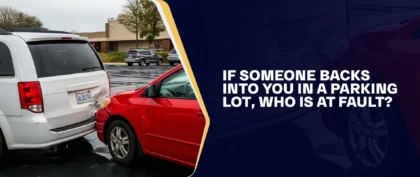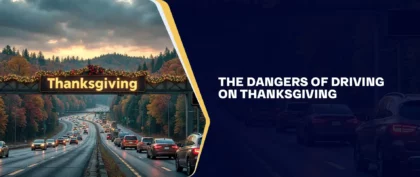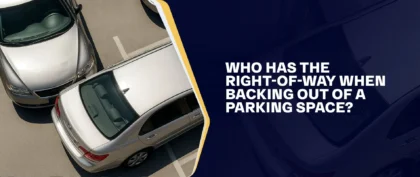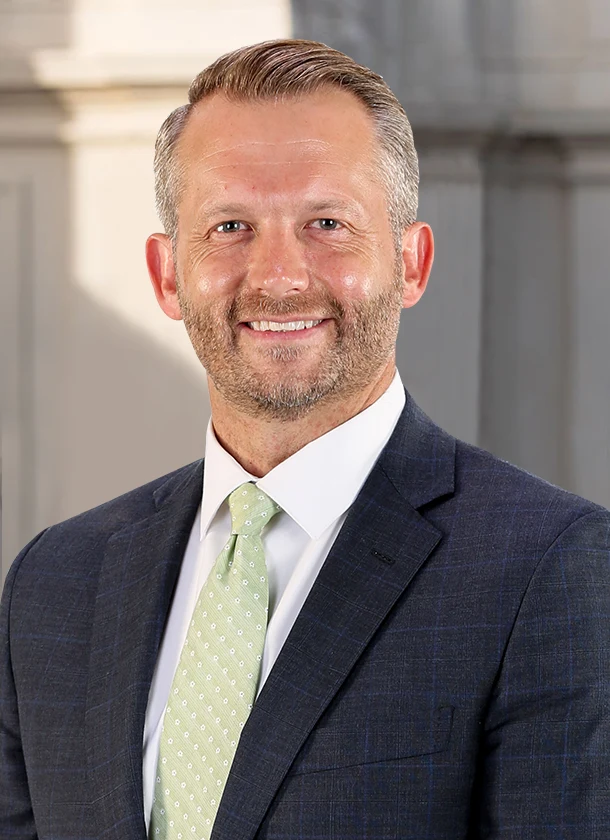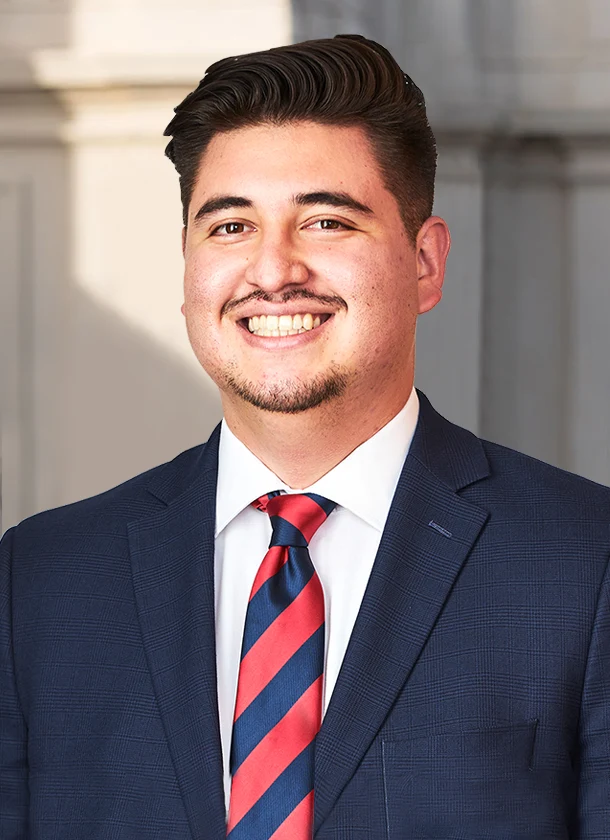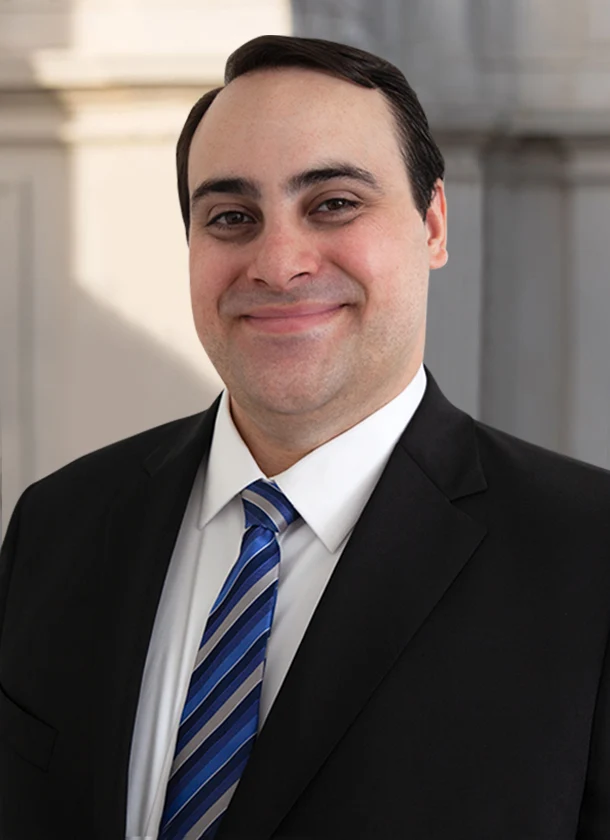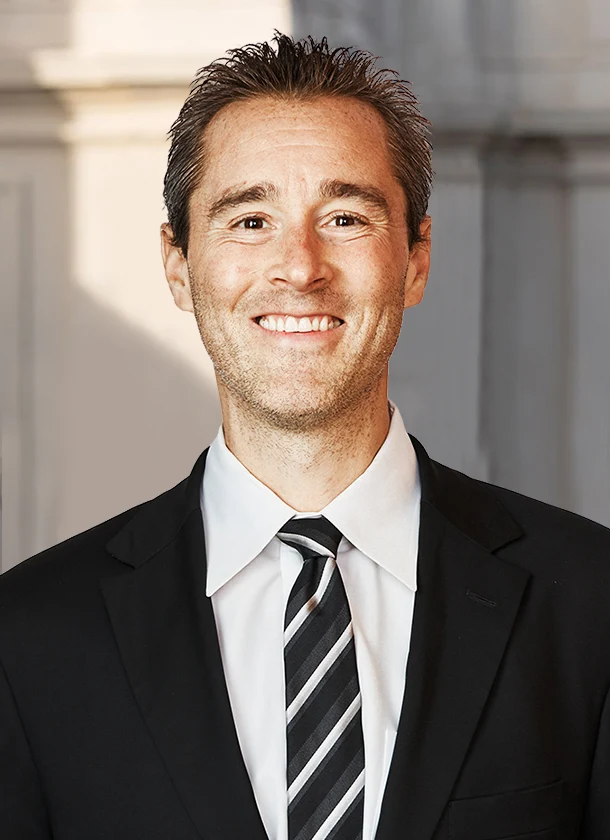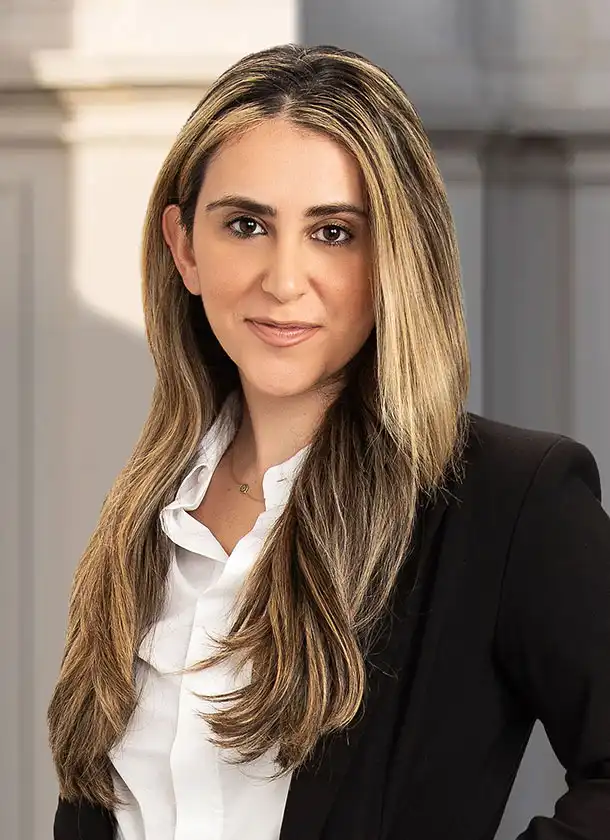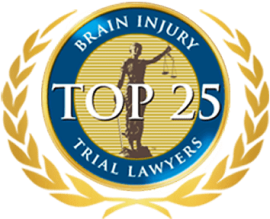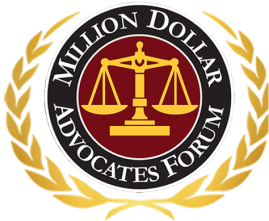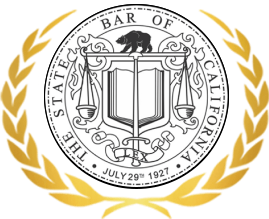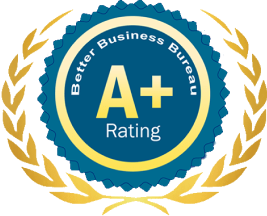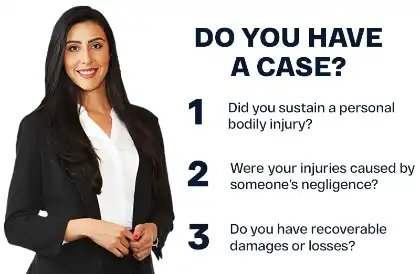Table of Contents
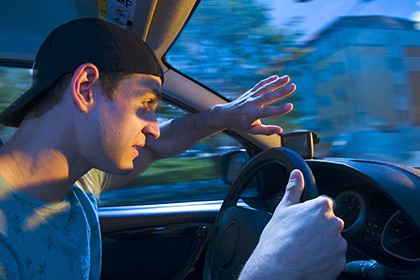
Neuroscientists are constantly learning more about how human beings perceive and react to the world around us. During a dangerous car accident, these perceptions can have fatal consequences. The split seconds between seeing an obstacle and reacting to it can make an impact on the outcome of the crash. These actions also have legal consequences because each driver’s choices determine who is at fault for causing the accident in the first place.
Our auto accident lawyers at Arash Law stay updated about developments in neuroscience to be better prepared to serve our clients. We work to prove whether the other driver was at fault for the accident, even if it seems like they were forced to make a split-second decision. Often, a driver’s poor choices, such as drinking and driving, are made before an accident ever occurs. Learn more about the latest scientific research into this crucial issue.
New Research Into The Subjective Experience Of Time
Depending on what you are doing, it can feel as if time is passing more slowly or faster, even when the same amount of time has passed. We have all experienced this phenomenon. Remember back to your school days, when the boring classes seemed to pass the slowest.
On the other hand, fun classes seemed to go much more quickly, even though they were the same length as the boring classes. Neuroscientists have conducted many different studies to examine this phenomenon and have found two main causes of this change in the perception of time:
- Increased attention to time appears to make it pass more slowly, and paying less attention to time passing seems to make it pass more quickly.
- When your brain is aroused (such as by the threat of a car accident), it begins increasing its rate of neural pulses in order to respond to the danger. The increase in rate causes your brain to count more time “units, ” making it seem as though more time has passed.
A study published in Neuroscience in 2011 took a closer look at the specific brain structures that are activated when an oncoming threat causes the sensation of time slowing down. While it was only the first study of an important issue, the researchers were able to identify specific areas of the brain that are involved and the difference in time perception that occurs when a threat is oncoming versus when it is going away. The researchers also speculated that more accurate results would be possible in future studies using 3D imaging to more accurately represent an oncoming threat.
What These Findings Mean For Victims Of Car Accidents
So what does all this mean for car accident victims? First, many victims do experience the sensation of time slowing down during a crash because their brains are reacting more quickly to determine the best way to deal with the oncoming threat. This experience is not limited to drivers. Passengers, motorcycle riders, bicyclists, pedestrians, and other road users can all experience this effect when they are in the danger zone. Second, you might not experience this phenomenon.
If, for example, you never saw the car before it hit you, your brain would never have a chance to evaluate an oncoming threat. Whether you experience this phenomenon or not, you still need to get immediate medical attention for your injuries. This phenomenon also does not generally affect the legal outcome of your case. The question of fault (“liability”) is usually made based on the conscious choices each person made on the road, not the reflexive decisions made in the fraction of a second before a collision occurs.
The Legal Questions
It is helpful for injury victims to understand how fault is determined in an accident case. This legal responsibility is also called “liability,” and adjusters often refer to the “at-fault” driver. It is also important for injury victims to understand that they are not bound by an insurance company’s determination of fault.
If the insurance company tries to blame you for part of your own injuries or deny the claim altogether, your attorney can challenge this decision by negotiating with the insurer or appealing within the company. If the insurance company still refuses to accept your claim, you may be able to file a lawsuit against the negligent driver. What follows are some questions that attorneys use to determine who was at fault for an accident.
Who Is At Fault For Causing A Collision?
The first question in an accident claim is, “Who was at fault for causing the crash?” The person who was at fault also has a legal obligation to pay for the injuries that they caused. Liability can also be split between two drivers. It can even be assigned to a third party that was not at the scene of the accident. (More on this later.) Insurance companies consider liability when determining financial compensation.
Insurance companies are generally responsible for paying damages caused by their insured driver. If they determine someone else was at fault, they may deny your claim, making it important to establish legal responsibility, often with the help of an injury lawyer.
What If I Was Partly At Fault For The Accident?
There is an old law of liability called “contributory negligence.” This rule states that a victim cannot recover any damages if they were at fault for the accident. In some states, the rule is modified to say that a victim can recover damages, but only if their fault was less than the defendant’s. This rule isn’t in effect in many states anymore.
California follows the more modern law of comparative fault, in which the person is liable for their own portion of damages, regardless of the other parties’ portions of the fault. So why do we mention this rule if it is not used in California? Because insurance companies may still sometimes refer to it when handling claims. Many injury victims who do not have an attorney negotiate with insurers on their own.
If the insurance adjuster determines that the victim was at fault and denies the claim, the injury victim might not know that they may still be able to seek compensation. Our car accident lawyers at Arash Law work to prove who was at fault for causing an accident. In some cases, the injury victim might bear a portion of responsibility. For example, a pedestrian who was crossing the street outside of a crosswalk might be found 20 percent at fault for a resulting collision.
In this case, the injured pedestrian may still be able to pursue 80 percent of their damages from the negligent driver, who was 80 percent at fault for the accident. Our pedestrian accident lawyers handle a wide range of accident cases, working to help establish liability and seek accountability on our clients’ behalf.
Can A Third Party Be Liable For My Injuries Even If They Weren’t At The Scene Of The Accident?
It might surprise you to learn that a defendant does not have to be at the scene of an accident to be found liable for your injuries. For example, workers’ compensation insurance covers all injuries sustained in the scope and course of employment. Suppose you are hit by a negligent driver while on the clock in a work vehicle, you may be able to pursue workers’ compensation coverage. This claim would be against your employer.
Even though your employer was not at the scene of the accident, they are still required to cover your injuries through workers’ compensation coverage. If you later get compensation for the same costs from the negligent driver, the workers’ compensation carrier may be able to seek reimbursement for the portion they paid. Your injury lawyers for accident cases will handle this process (called “subrogation”) to avoid double-billing for any expenses and to help you pursue compensation available for your case.
Another common scenario involves a crash that is caused by a defective vehicle. Think of all the manufacturers’ recalls you have heard about in the news. Car companies voluntarily pay for expensive recalls so defective vehicles can be fixed because this is less costly than paying for accidents caused by their defective vehicles. An auto manufacturer can be held accountable through a legal theory known as “product liability,” a consumer protection law that requires manufacturers to sell only safe products to American consumers.
If a product causes injuries because it is defective, the injury victims may have grounds to pursue compensation from the manufacturer. The manufacturer does not have to be at the scene of the accident to be held legally accountable for causing it. The injury victims do not even have to prove that the manufacturer was negligent. So long as the product was being used as intended, strict product liability holds the manufacturer legally obligated to pay for any injuries caused by the defective product.
How does product liability work in a car accident case? Imagine that a new truck has defective brakes. When approaching an intersection, the driver is unable to stop the truck through no fault of their own. The driver and a pedestrian are injured in the accident. Both injury victims may file product liability claims against the manufacturer. The claim can also be filed against the company that made the brakes.
There are a few disclaimers. If, for example, the brakes weren’t working because the driver had ruined them while trying to launch their boat into a lake, this would not be a defect. There would be no product liability claim because they had not used the truck as intended. The pedestrian would, however, may still have a negligence claim against the driver. Product liability claims can also be denied if the user of the product is not foreseeable.
So if, for example, a thief stole the truck, the manufacturer would not be held liable for injuries caused by this person, who was not intended to use the product. As you can see, product liability claims can get complicated. Our injury attorneys at Arash Law have experience handling negligence and product liability claims and are committed to advocating for your rights throughout the process.
What Should I Do To Avoid A Collision?
In many cases, it is not your responsibility to find a way to avoid a collision in the split-second before it occurs. The person who put you in danger may be held liable for your injuries. An injury victim may also be partially liable if they put themselves in danger, for example, by crossing the street outside of a designated crosswalk. Despite this, there are still some things you can do to reduce your risk of being involved in an accident.
- Slow Down — Speed is a factor in many fatal car accidents. Speed increases the amount of force that is generated in a collision. This increase, in turn, increases the severity of injuries, which is why so many speeding accidents become fatal. Speeding also reduces the time you have to react to an obstacle on the road. With more time to react, you will have better options for avoiding an accident when possible. Often, drivers who were speeding are found partly at fault for an accident, even if the other driver bears more liability.
-
Be Prepared in Times of Low Visibility — There are many times when it is difficult to see the road ahead of you. Use extra caution at night, during rain or snow, or when it is foggy. Slow down and be extra mindful of the roadway surrounding you. Use your headlights or horn as necessary to alert other drivers to your presence.
Taking these precautions is especially important to prevent rain accidents, which are more likely when visibility is limited and roads are slippery. The law requires drivers to act with “reasonable prudence,” meaning that they must take reasonable precautions to avoid accidents when their visibility is limited.
- Be Prepared to Encounter Smaller Vehicles — The smaller a vehicle is, the more difficult it is to see, which is why motorcycles are involved in so many accidents. As a driver, it is your responsibility to watch out for smaller vehicles around you, even when they are hard to see. Be especially watchful during times of low visibility. Watch out for motorcycles, bicycles, scooters, and pedestrians.
Who Had The Last Chance To Avoid A Collision?
Earlier, we discussed the old rule of contributory negligence. Because this rule is so harsh, it has an exception known as the “last clear shot” doctrine. Under this exception, the person with the last clear shot to avoid the collision had the responsibility to do so, meaning that an injury victim who was partly at fault for the accident may be able to seek compensation if the negligent driver had the last clear shot to avoid the accident.
So why do we bring this up if contributory negligence does not apply to California accident cases? Even in cases where contributory negligence is not applied, a claims adjuster might say that you had a chance to avoid the collision, so you were at fault.
This assertion is not always accurate. However, injury victims who do not have an auto accident lawyer may not know the applicable law. During the claims process, adjusters may reference complex legal concepts, which can make it difficult for injury victims to understand their rights and options.
At Arash Law, our lawyers aim to help accident victims pursue fair compensation for their injuries and losses to the full extent of the law. Our attorneys review the facts, investigate the circumstances, and gather available evidence to identify potentially liable parties and present claims against those responsible.
Experienced Car Accident Lawyers For California Injury Cases
If you are searching online for a “California accident lawyer near me,” our injury law firm is ready to offer clear legal guidance. At Arash Law, our experienced motor vehicle accident attorneys have experience handling injury claims after a crash.
We also represent clients in Los Angeles, San Francisco, Riverside, Bakersfield, Santa Barbara, San Jose, San Diego, Fresno, Sacramento, Sherman Oaks, and other areas in California. Call (888) 488-1391 or fill out our “Do I Have A Case?” form here to schedule your free initial consultation. Our car crash attorneys are committed to representing your interests during negotiations or litigation.


